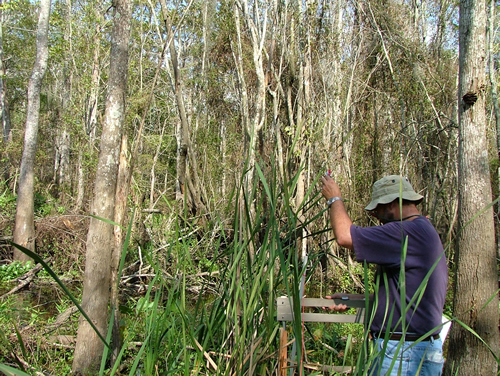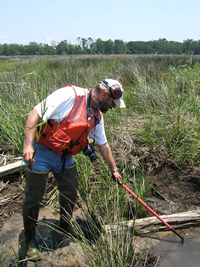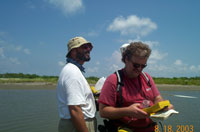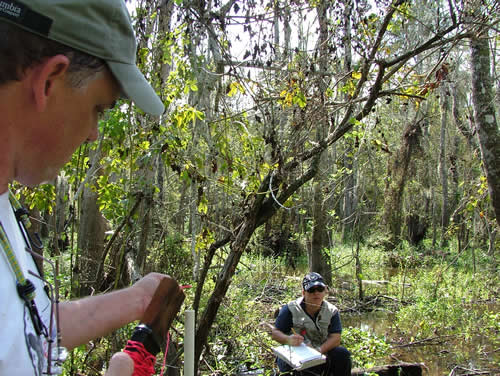Natural Resource Damage Assessment (NRDA)
When oil spills injure natural resources such as waterways, vegetation, or wildlife, the Louisiana Oil Spill Coordinator’s Office (LOSCO) and its trustee partners seek compensation for the public from the Responsible Party. To guide our efforts, we use a process called a Natural Resources Damage Assessment (NRDA).
The Oil Pollution Act of 1990 (OPA), 33 USC 2701 et seq. and the Louisiana Oil Spill Prevention and Response Act of 1991 (OSPRA), La. Rev. Stat. 30:2451 et seq., are the principal federal and state statutes, respectively, authorizing federal and state agencies and tribal officials to act as natural resource trustees for the recovery of damages for injuries to natural resources and services resulting from incidents in Louisiana.

NRDA Trustees
|
On the state level, the trustees include:
The federally designated natural resource trustees include:
The NRDA process provides the framework for determining:
- The resources that have been injured
- The loss to the public
- How the resources can be restored
- The type and amount of restoration that is appropriate
Both federal and state NRDA regulations provide a step-by-step process for trustees to determine injuries, to assess damages, and to develop and implement restoration projects that compensate the public for injuries to natural resources impacted by an incident. In general, the NRDA process involves three steps: (1) preassessment; (2) restoration planning; and (3) restoration implementation.
|


|
NRDA Process
Step One: Preassessment
LOSCO and its trustee partners evaluate the extent of the injury to natural resources. We determine whether the oil spill cleanup will eliminate the threat of ongoing injury. If injuries are expected to continue, and feasible restoration alternatives exist to address such injuries, we move to Step Two: Restoration Planning. The notice to conduct Restoration Planning is published in the Louisiana State Register.
Step Two: Restoration Planning
In this phase, LOSCO and its trustee partners evaluate potential injuries to determine the appropriate scale of restoration activities. First we conduct an injury assessment, which determines the nature and extent of injuries to natural resources and services. Next we select restoration options from a range of alternatives. Whenever possible, we choose alternatives that will return the injured resources and services to their pre-spill conditions. We also seek to compensate the public for losses incurred. The Responsible Party is liable for paying the cost of restoration plus reasonable assessment costs.
Step Three: Restoration Implementation
LOSCO works with its trustee partners and the Responsible Party to design and implement restoration actions. We invite the public to comment on the restoration plans before they are implemented. All restoration plans include monitoring provisions to allow for corrections, measure progress, and determine the restoration effort’s overall success. In many cases, the Responsible Party assumes responsibility for implementing the restoration plan, with oversight from LOSCO and its trustee partners.
To assist the natural resource trustees in carrying out their NRDA responsibilities under OPA and OSPRA, State of Louisiana and federal natural resource trustees have developed a jointly administered statewide Louisiana Regional Restoration Planning Program (RRP Program)

NRDA Incidents Status & Administrative Record
To access NRDA Incident Status, NRDA Restoration Projects, and Administrative Records, visit https://data.losco.org/.
Related Links
NOAA Damage Assessment, Remediation, and Restoration Program
USDOI NRDA and Restoration Program
NRDA Restoration Project Submittal Form

|